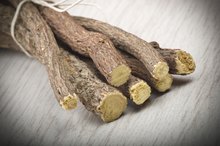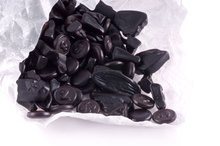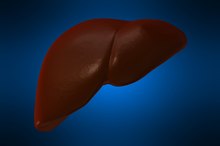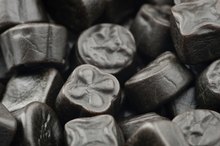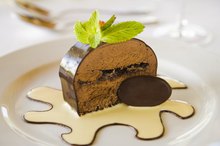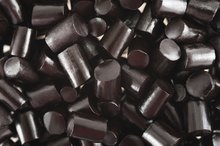What does fact checked mean?
At Healthfully, we strive to deliver objective content that is accurate and up-to-date. Our team periodically reviews articles in order to ensure content quality. The sources cited below consist of evidence from peer-reviewed journals, prominent medical organizations, academic associations, and government data.
- MedlinePlus; Licorice; April 2011
- Linus Pauling Institute; Potassium; Jane Higon, Ph.D.; February 2004
The information contained on this site is for informational purposes only, and should not be used as a substitute for the advice of a professional health care provider. Please check with the appropriate physician regarding health questions and concerns. Although we strive to deliver accurate and up-to-date information, no guarantee to that effect is made.
High Potassium & Black Licorice
While you may think of licorice as the rope-like candy treat, licorice starts off as a plant. Its strong flavor not only makes it ideal for adding to foods and drinks, it also is used as an herbal preparation to soothe upset stomach, heartburn and stomach inflammation. Before you reach for the nearest bag of black licorice, however, you should know how eating black licorice could affect your potassium levels.
Significance
Potassium is a mineral in your body that is used to help your muscles and nervous system function effectively. Therefore, your body must maintain tight control on potassium levels to continue to properly function. Low levels of potassium have been linked with increased risk for heart and kidney disease. However, high potassium levels can be dangerous as well, typically because they are due to an underlying medical condition such as kidney failure.
- Potassium is a mineral in your body that is used to help your muscles and nervous system function effectively.
- Therefore, your body must maintain tight control on potassium levels to continue to properly function.
Effects
Licorice Root & Smoking
Learn More
Consuming excess amounts of black licorice can lower high potassium levels in your blood because of a compound known as glycyrrhizic acid. This acid has effects similar to a hormone known as aldosterone that works to stimulate your kidneys to release potassium. When you eat too much black licorice, the glycyrrhizic acid can cause you to lose the potassium built up in your bloodstream. While it can be harmful to have too much potassium in your body, having too little is problematic too. You may experience symptoms like severe vomiting, easy fatigue, muscle weakness and irregular heartbeat.
- Consuming excess amounts of black licorice can lower high potassium levels in your blood because of a compound known as glycyrrhizic acid.
As a Treatment
While black licorice can lower potassium levels, it typically is not used as a treatment for high potassium -- a condition known as hyperkalemia -- because physicians typically attempt to address the underlying condition associated with the high potassium levels. You can experience high potassium as a result of taking excess potassium supplements or potassium-sparing diuretics. In this case, your physician would adjust your dosage of your medication rather than recommend licorice as a treatment. If you had potassium due to a medical condition like kidney disease or hemolysis -- where your blood cells rupture -- your physician would suggest alternate treatments. Instead, it’s important to be aware how licorice could lower your high- to normal-range potassium levels.
- While black licorice can lower potassium levels, it typically is not used as a treatment for high potassium -- a condition known as hyperkalemia -- because physicians typically attempt to address the underlying condition associated with the high potassium levels.
- If you had potassium due to a medical condition like kidney disease or hemolysis -- where your blood cells rupture -- your physician would suggest alternate treatments.
Moderation
Does Black Licorice Help Induce Labor
Learn More
Due to the potassium-lowering effects of licorice, it is best to eat it in moderation. BBC News recommends limiting your licorice intake to about 100 mg per day to avoid adverse health effects 3. While the amount of licorice added can vary by manufacturer, chewing gum can contain about 24 mg of licorice while herbal teas can have about 450 mg per 32 oz. serving. If you consume licorice and begin to experience side effects like headaches, swelling or muscle weakness, discontinue use and talk to your physician.
- Due to the potassium-lowering effects of licorice, it is best to eat it in moderation.
- BBC News recommends limiting your licorice intake to about 100 mg per day to avoid adverse health effects 3.
Related Articles
References
- Linus Pauling Institute; Potassium; Jane Higon, Ph.D.; February 2004
- University of Marlyand Medical Center; Licorice; Steven Ehrlich, NMD; March 2010
- BBC News; Woman 'Overdoses' on Licorice; May 2004
- NIH National Center for Complementary and Integrative Health. Licorice root. Updated December 1, 2016.
- Raveendra KR, Jayachandra, Srinivasa V, et al. An extract of glycyrrhiza glabra (GutGard)alleviates symptoms of functional dyspepsia: a randomized, double-blind, placebo-controlled study. Evidence-Based Complementary and Alternative Medicine. 2012;2012:1-9. doi:10.1155/2012/216970
- Messier C, Epifano F, Genovese S, Grenier D. Licorice and its potential beneficial effects in common oro-dental diseases. Oral Dis. 2012;18(1):32-39. doi:10.1111/j.1601-0825.2011.01842.x
- Shi Q, Hou Y, Yang Y, Bai G. Protective effects of glycyrrhizin against β2-adrenergic receptor agonist-induced receptor internalization and cell apoptosis. Biol. Pharm. Bull. 2011;34(5):609-617. doi:10.1248/bpb.34.609
- Tsao S, Yin M. Antioxidative and antiinflammatory activities of asiatic acid, glycyrrhizic Acid, and oleanolic acid in human bronchial epithelial cells. J. Agric. Food Chem. 2015;63(12):3196-3204.
- Zhao H, Zhang X, Chen X, et al. Isoliquiritigenin, a flavonoid from licorice, blocks M2 macrophage polarization in colitis-associated tumorigenesis through downregulating PGE2 and IL-6. Toxicology and Applied Pharmacology. 2014;279(3):311-321. doi:10.1016/j.taap.2014.07.001
- Nahidi F, Zare E, Mojab F, Alavi-Majd H. Effects of licorice on relief and recurrence of menopausal hot flashes. Iranian Journal of Pharmaceutical Research: IJPR. 2012;11(2):541-8.
- Hajiaghamohammadi AA, Zargar A, Oveisi S, Samimi R, Reisian S. To evaluate of the effect of adding licorice to the standard treatment regimen of helicobacter pylori. The Brazilian Journal of Infectious Diseases. 2016;20(6):534-538. doi: 10.1016/j.bjid.2016.07.015
- Irani M, Sarmadi M, Bernard F, Ebrahimi Pour GH, Shaker Bazarnov H. Leaves antimicrobial activity of Glycyrrhiza glabra L. Iranian Journal of Pharmaceutical Research: IJPR. 2010;9(4):425-8.
- Penn State Hershey Milton S. Hershey Medical Center. Licorice.
- Omar HR, Komarova I, El-Ghonemi M, et al. Licorice abuse: time to send a warning message. Therapeutic Advances in Endocrinology. 2012;3(4):125-138. doi:10.1177/2042018812454322
- Räikkönen K, Martikainen S, Pesonen A, et al. Maternal licorice consumption during pregnancy and pubertal, cognitive, and psychiatric outcomes in children. Am J Epidemiol. 2017;185(5):317-328. doi:10.1093/aje/kww172
- Consumer Reports. Food and drug interactions you need to know about. Updated November 4, 2018.
- Winchester Hospital. Library. Updated April 11, 2011.
- Consumer Reports. How to choose supplements wisely. Updated October 30, 2019.
- FDA. Black licorice: Trick or treat? Updated November 6, 2017.
Writer Bio
Rachel Nall began writing in 2003. She is a former managing editor for custom health publications, including physician journals. She has written for The Associated Press and "Jezebel," "Charleston," "Chatter" and "Reach" magazines. Nall is currently pursuing her Bachelor of Science in Nursing at the University of Tennessee.
